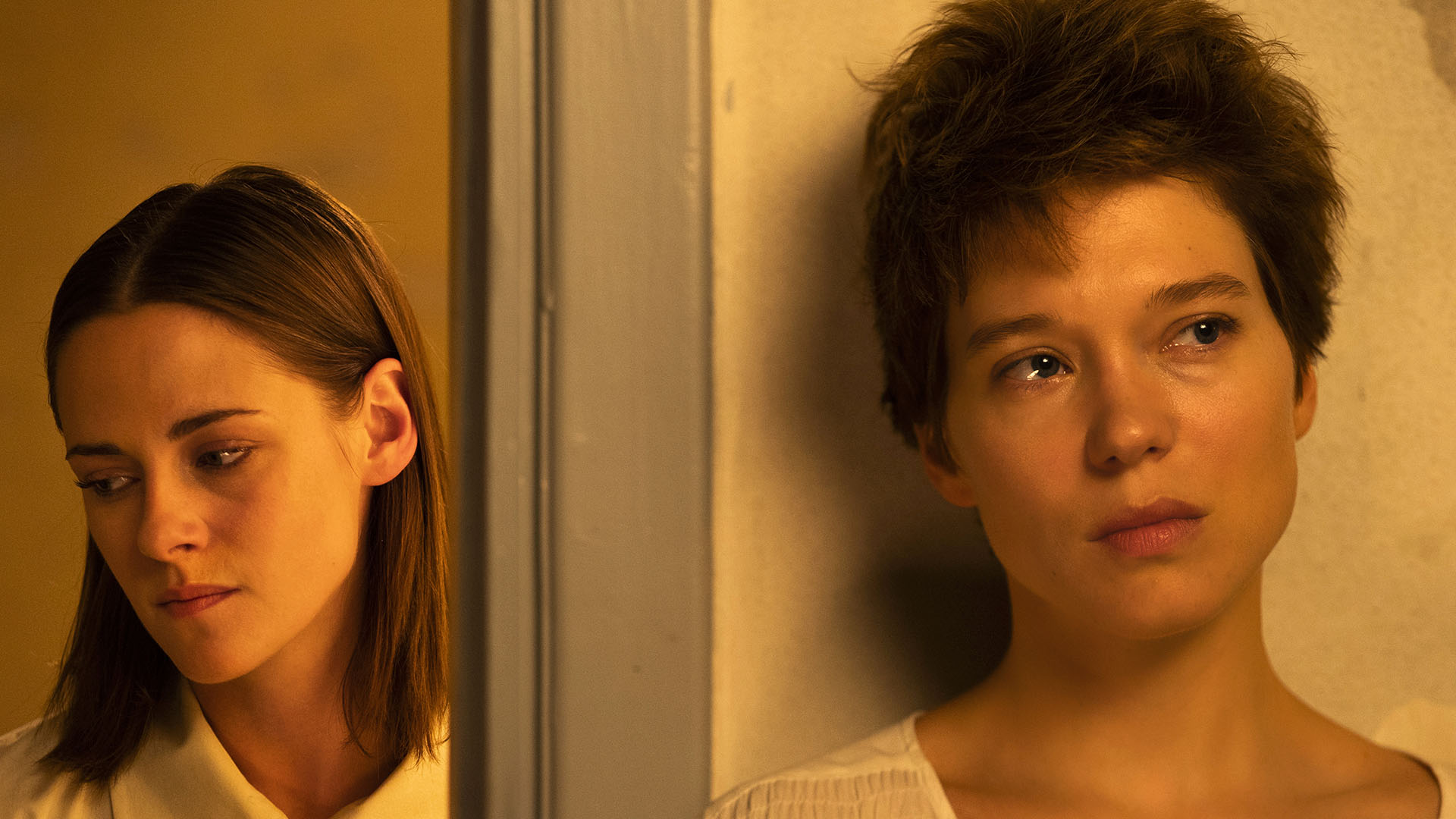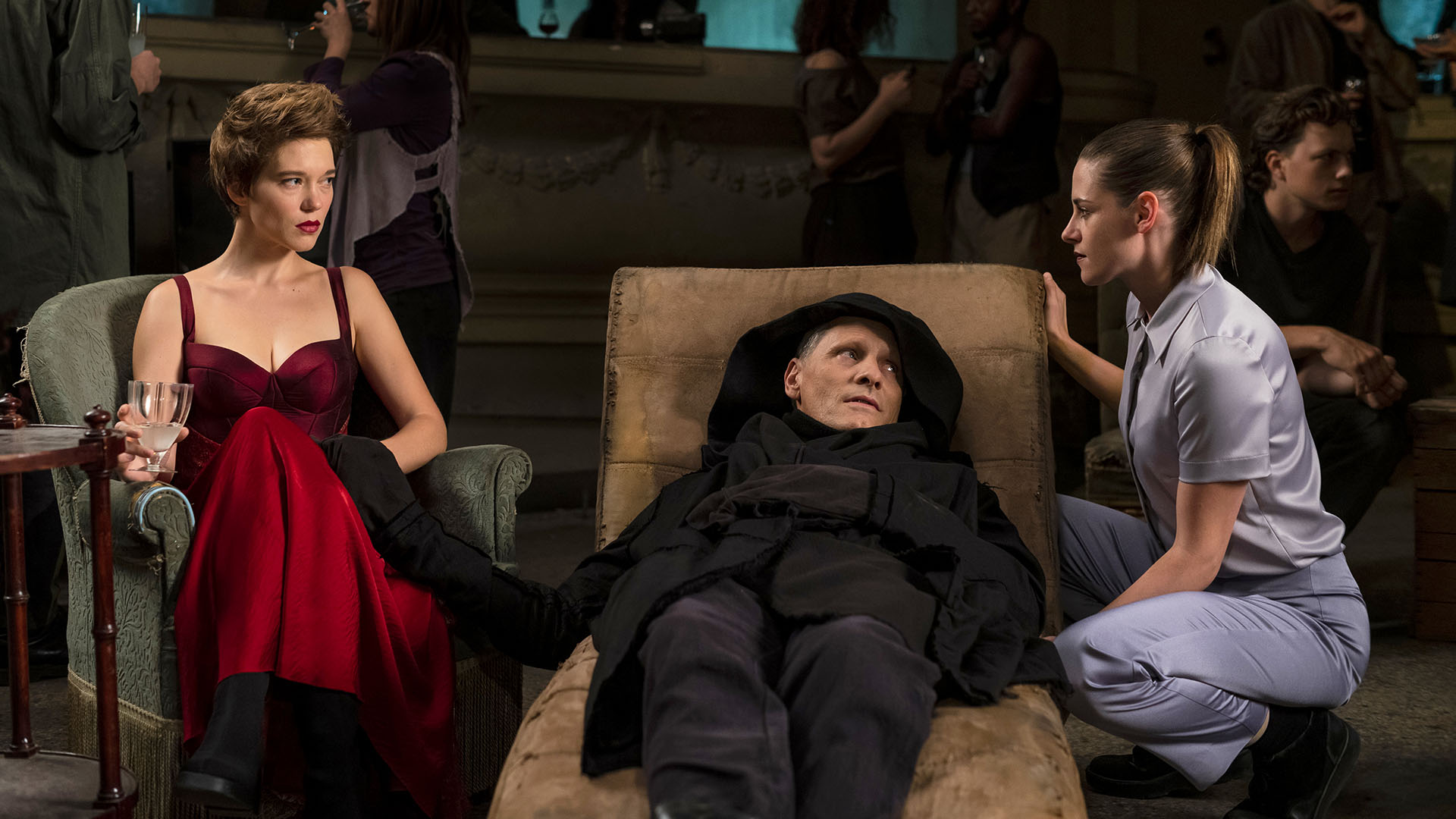Camp, icky and weird, does Cronenberg’s body horror Crimes of the Future cut it?
The master of unsettlingly body horror returns, with a future in which organ removal is performance art.

David Cronenberg, master of unsettling body horror, returns with a vision of a crumbling, dystopian future where organ removal has become performance art. Stephen A Russell takes a look at the mutating nightmare starring Viggo Mortensen, Léa Seydoux, and the wackiest role yet from K-Stew.
What would you do if you walked into the bathroom one fine day to find your young son chomping down on the rim of a plastic waste bin, gobbling this two-dollar shop detritus of disposable modern life in a frothy mess of regurgitated contentment? It’s unlikely many would take the drastic action of Lihi Kornowski’s strung-out mum Djuna. She promptly smothers her firstborn and then leaves a snarky answer message on the phone of her ex-husband (Scott Speedman’s Lang) haranguing him to pick up the corpse, as if he’d simply forgotten to take out the bins, rather than his murdered, bin-eating son.
Even for David Cronenberg, the master of unsettlingly body horror, it’s a wild entrée to the crumbling dystopian future depicted in Crimes of the Future. Shot in a handsome, sunlit Grecian seaside town by cinematographer Douglas Koch, this semi-deserted space is littered with the hulking corpses of rusting-hulled ships. Strange sorts shuffle the stone-paved streets zombie-like at night, lustily carving into one another with knives. “What on earth is going on?” you might ask—but don’t expect too many answers.
His first feature since 2014’s underrated Hollywood excoriation Maps to the Stars is a strange and unruly beast with an almost operatic panache and an absurd, off-kilter sense of humour. Thematically linked to his 1970 film of the same name, which explored a near-collapse world robbed of women through scientific folly, in 2022’s Crimes of the Future we have poisoned the seas and irreparably altered our genetic makeup with way too many unnatural interventions. So much so that the skittish agents of the National Organ Registry—populated by Kirsten Stewart’s skeevily jittering Timlin and Don McKellar’s easily excitable Wippet—are tasked with tattooing the new and unexplained organs that keep popping up inside folks.
That brings them to the door of the lugubrious Saul Tenser, a swishy black-robed performance artist played by Viggo Mortensen, re-joining Cronenberg for a fourth time following A History of Violence, A Dangerous Method and Eastern Promises. Saul’s commitment to his art cuts deep, darlings. Literally. Positively relishing the mutating mass of unidentified organs that keep bubbling up inside him, he offers up this caustic cauldron for performance art’s sake to partner Caprice.

Austerely realised by sheer silk gown-sporting Bond star Léa Seydoux, she takes great sexual and professional interest in removing these fleshy lumps with the aid of a sarcophagus-like surgical tool she manipulates with what looks like a glowing Xbox controller. All of this is staged live in front of a salivating crowd of doomsday dilettantes who can’t get enough of their intense exaggeration of body art, as presented in various subterranean urban spaces that recall then-music director David Fincher’s spin on HR Giger’s Alien nightmares.
As does the undulating, pendulous organ Saul restlessly plugs himself into every sleepless night, and the disconcertingly wobbling skeletal chair he clambers into while attempting to consume human food he can barely stomach these days. Has he pushed his passion too far? And what is dodgy daddy Lang up to with his nefarious scheme involving Willy Wonka-like bars the colour of a blown-up Violet Beauregarde? How does his poor son’s fate feed into Saul and Caprice’s death as art discourse? And just what, exactly, are the motives of Welket Bungué’s scene-stealing detective Cope?

There is a smarter, tighter film with more to say about all this in here. While Cronenberg doesn’t quite capture it, the gloriously messy tableau he presents is wildly enjoyable nonetheless. If Mortensen and Seydoux take it a touch too seriously, the camp flourishes of everyone else (especially whatever Stewart was aiming for) are more in-tune with its slithering silliness.
Neither as disturbingly erotic as Crash, nor as spew-inducingly gory as The Fly, part of the reason it doesn’t quite match up to these high points in the Cronenberg canon is an over-reliance on computer graphics over the practical. Still, we get a fair dose of fabulously icky prosthetic work and some wonderfully weird production design from long-term collaborator Carol Spier.

It’s the daftness that wins over the dourer, more meandering stretches, perfectly summed up by Stewart’s ludicrously obvious tldr description of what’s going on here—“Surgery is the new sex.” But Mortensen does get in a fabulously arch, instantly meme-able rejoinder to a whispering Timlin’s awkwardly horny move on Saul: “I’m not very good at the old sex.”
Cronenberg’s cutting edge may be dulling with age, but there’s life left yet in his mad vision.

























